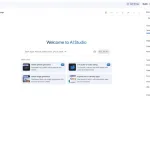Front-end development always changes with new tools, frameworks, and technologies that will occur periodically. Keeping up with these trends in your business can help you to stay competitive in this field. Technologies are changing based on how we create and use online applications. Here, we discuss the updates on front-end development technologies you must implement in the coming years. Let’s take a closer look at what’s hot and what’s not! This article will help you to succeed by leading through the online platform.
Why Staying Updated with Front-end Trends
Front-end development is an active and continuously changing field. These latest trends enhance modern trends and will help businesses to improve performance, reduce costs, and deliver superior user experience.
- Boost Productivity: Adapt modern tools and techniques to improve site performance, SEO, and customer engagement, driving higher conversions and satisfaction.
- Deliver Superior User Experiences: The advanced Front-end frameworks and libraries create visually stunning and highly interactive user interfaces.
- Enhance Performance: Optimize your web applications for fast load times and responsiveness, ensuring a satisfying user experience.
- Stay Competitive: Stay active by following the latest Front-end development trends.
What’s Hot in 2025:
1. Web Components and Framework Interoperability
Web components are reusable components that can be used with any front-end framework, including Angular, React, and Vue. They can also be used without a framework. Web Components can be used independently of a specific framework, enabling smoother integration into any web application. This flexibility promotes better code reuse and easier maintenance, regardless of the framework being used.
2. Server-Side Rendering (SSR) and Static Site Generation (SSG)
SEO performance, faster page loads, and enhanced user experience make SSR and SSG indispensable for modern web applications. Tools like Next.js, Nuxt.js, and Astro are leading this trend. Websites that generate pages server-side (like a blog or e-commerce site) offer faster load times and better SEO performance.
3. JAMstack (JavaScript, APIs, and Markup)
The JAMstack architecture continues to grow, offering improved performance, security, and scalability by separating components from the front-end and back-end. The use of static site generators and headless CMSs is only advancing.
4. TypeScript Everywhere
TypeScript improves the developer experience with type safety, better tooling, and scalability. A React application using TypeScript will catch type errors early during development, saving time on debugging and reducing runtime errors.
5. AI-Powered Development Tools
AI is changing how developers write code. Tools like GitHub are becoming important in suggesting code snippets and auto-completing code based on context. It accelerates the development process and reduces the learning process for new developers. AI tools assist with refactoring code, writing unit tests, or even generating full UI layouts.
6. Progressive Web Apps (PWAs)
PWAs continue to bridge the gap between web and native apps. They offer offline capabilities, push notifications, and faster performance, especially on mobile devices, without needing installation from an app store. Twitter Lite is a great example of a PWA, offering a fast, app-like experience directly in the browser.
7. Enhanced UI/UX with Motion Design
Motion design, animations, micro-interactions, and smooth transitions improve user experience. It can make a website feel more interactive, engaging, and visually appealing. Subtle hover effects, page load transitions, or animations in CSS and GSAP are some examples.
8. Cloud-Native Development and Edge Computing
Cloud-native tools like Vercel and Netlify improve front-end workflows by allowing developers to deploy applications closer to end-users, improving performance. Edge computing allows computation to be done at the network edge, reducing latency and increasing speed. Deploying a website with serverless functions on AWS Lambda or Cloudflare Workers for faster response times.
9. No-Code/Low-Code Platforms for Faster Development
While developers continue to build custom solutions, there’s a growing demand for quick prototypes and simple applications. No-code platforms like Webflow, Bubble, and OutSystems are accelerating the time-to-market for many projects, allowing designers and non-developers to create sophisticated front-end applications. For example, Using Webflow to design a landing page with animations and interactions without needing to code.
10. Tailwind CSS & Utility-First Design
Tailwind CSS has gained immense popularity because it allows for a more efficient, utility-first approach to styling. The extended functionality like Headless UI and Heroicons, offers speed and flexibility in designing UIs. Instead of writing custom CSS, developers can use predefined utility classes like text-center or bg-blue-500 directly in HTML.
What’s Not in 2025:
1. jQuery and Legacy JavaScript Libraries
jQuery was once required for DOM manipulation and cross-browser compatibility. However, with modern JavaScript and frameworks like React and Vue, jQuery is rarely needed. It’s becoming a thing of the past. For example, The need to include jQuery in a project is often replaced by plain JavaScript or modern frameworks.
2. Monolithic Front-End Frameworks
Frameworks like Angular and React are still highly popular, the trend towards micro-frontends and component-based architectures is replacing the need for monolithic structures. This shift allows for easier scaling, faster updates, and better code maintainability. Large Angular apps are being broken into smaller, more manageable pieces with Web Components or micro-frontend frameworks.
3. Flash and Legacy Media Players
Flash has been officially depreciated, and the same applies to old media players like Silverlight or QuickTime. HTML5-based media players have taken over, ensuring better performance, security, and compatibility across all devices. Modern websites no longer use Flash for videos or animations, relying instead on HTML5 <video> and <audio> elements.
4. Overuse of Heavy Frameworks
Frameworks like React, Angular, and Vue will remain popular, but the overuse of large frameworks for simple tasks is being replaced with more lightweight alternatives. Solid.js and Svelte are gaining popularity for their speed and simplicity. Using React for a simple form might be overkill when Alpine.js or Lit could provide the same functionality in a smaller package.
5. Inline Styling in HTML
Inline styles were a common practice in earlier web development, separating CSS from HTML (through external or scoped styles) is now considered a best practice. This approach improves maintainability and modularity. Developers now favor CSS-in-JS solutions like Styled Components or Emotion for styling React components over inline styles.
6. Flashy, Over-the-Top Animations
Animations can enhance a user’s experience, excessive or distracting animations are being phased out. These can slow down page load times and create a poor experience for users, especially on mobile devices. Banners with vivid pop-up animations or entire websites with complex page transitions are becoming less common.
7. Excessive Use of CSS Preprocessors
Sass and LESS were once staples in front-end development, modern CSS has evolved, and native CSS features like custom properties (CSS variables) and CSS Grid/Flexbox have replaced the need for preprocessors in many cases. For example, developers increasingly use native CSS solutions, by maximizing powerful features like custom properties for theming and modern layout tools.
How Front-End Trends Help Businesses
- Improved User Experience: Trends like SPAs, PWAs, and responsive design ensure a seamless, fast, and enjoyable user experience, increasing customer satisfaction and retention.
- Cost Efficiency: Technologies such as serverless computing, micro frontends, and Jamstack architecture allow businesses to reduce operational costs and scale more easily.
- Faster Time to Market: AI-driven development tools and automated workflows enable teams to build and launch features faster, allowing businesses to grow faster in this field.
- Higher Engagement and Conversions: Trends like voice and gesture interfaces, dark mode, and personalized web experiences help businesses create more engaging, interactive sites that drive conversions.
- Better Accessibility: By using trends like dark mode, voice interfaces, and customizable layouts, businesses can ensure their products are accessible to a broader audience, including those with disabilities.
Front-end development is growing towards modular, scalable, and high-performance solutions. Web Components, TypeScript, and server-side rendering are shaping the future, while older trends like jQuery and monolithic frameworks are falling. Developers focus on building faster, more user-friendly web experiences by benefiting cloud-native tools, AI, and modern design practices. The key to success is keeping up with these changes while being mindful of the tools that are fading outdated.
If you’re ready to build the future of front-end development and ensure your projects are most advanced, it’s time to adapt and innovate.




